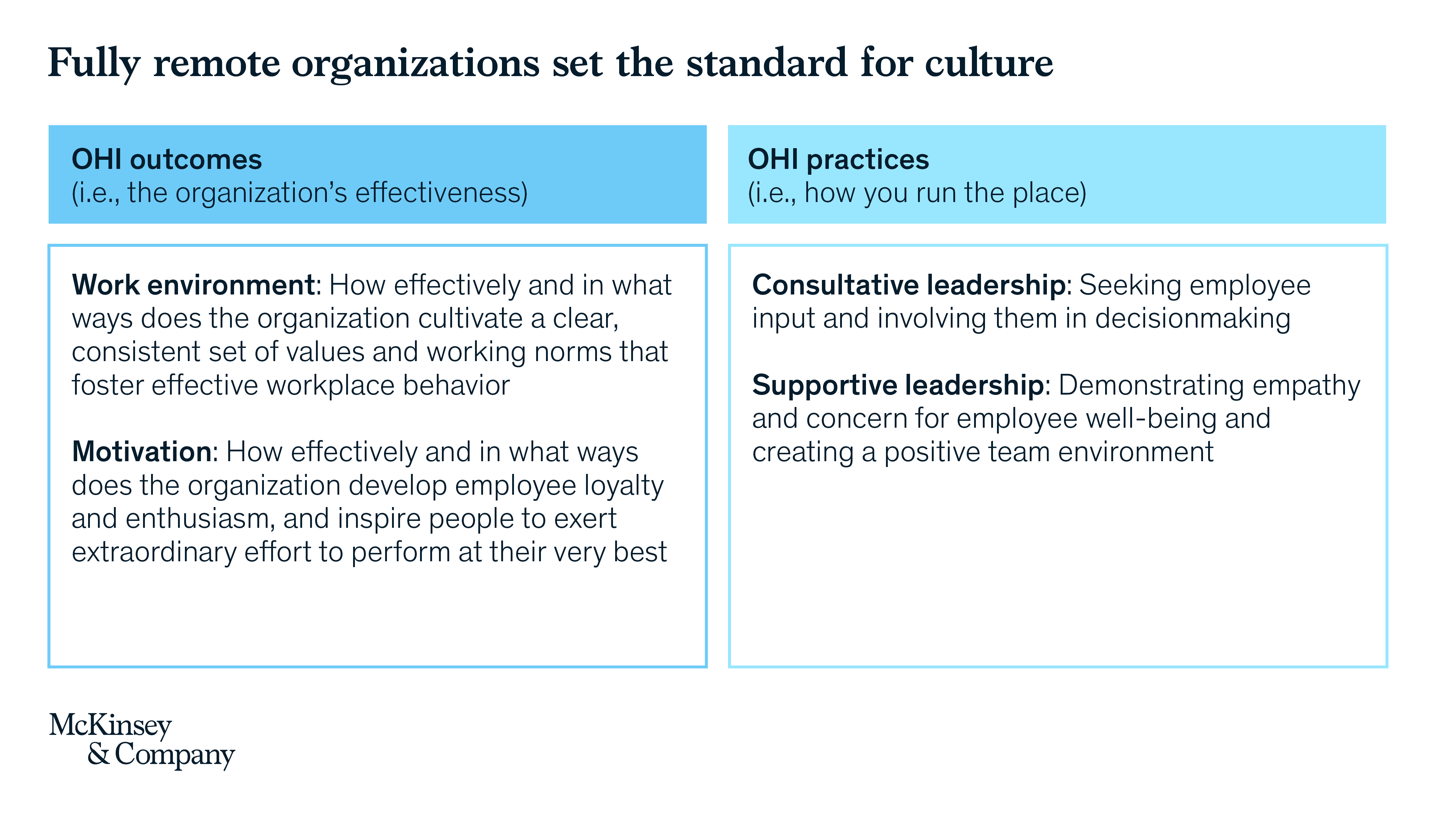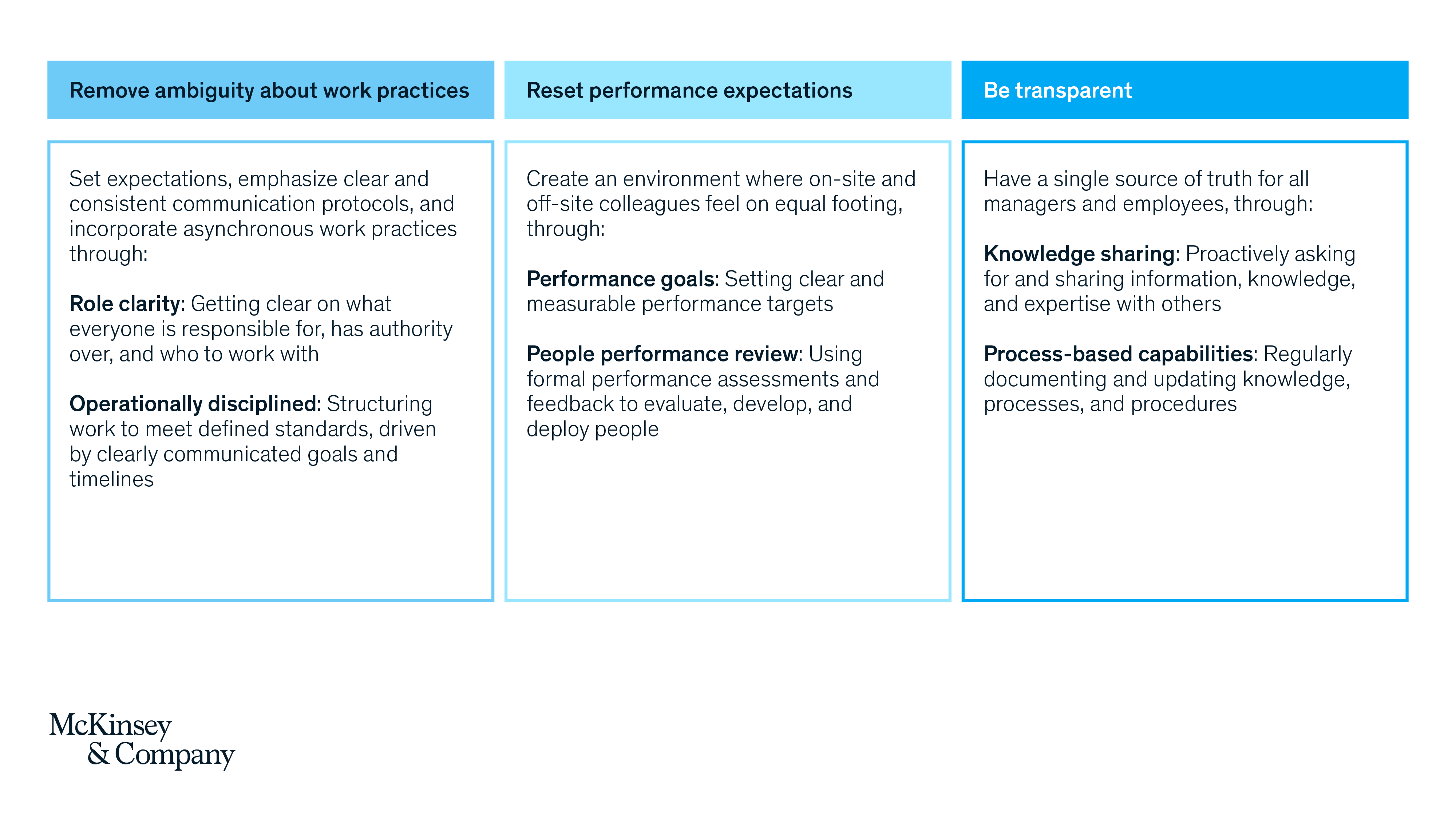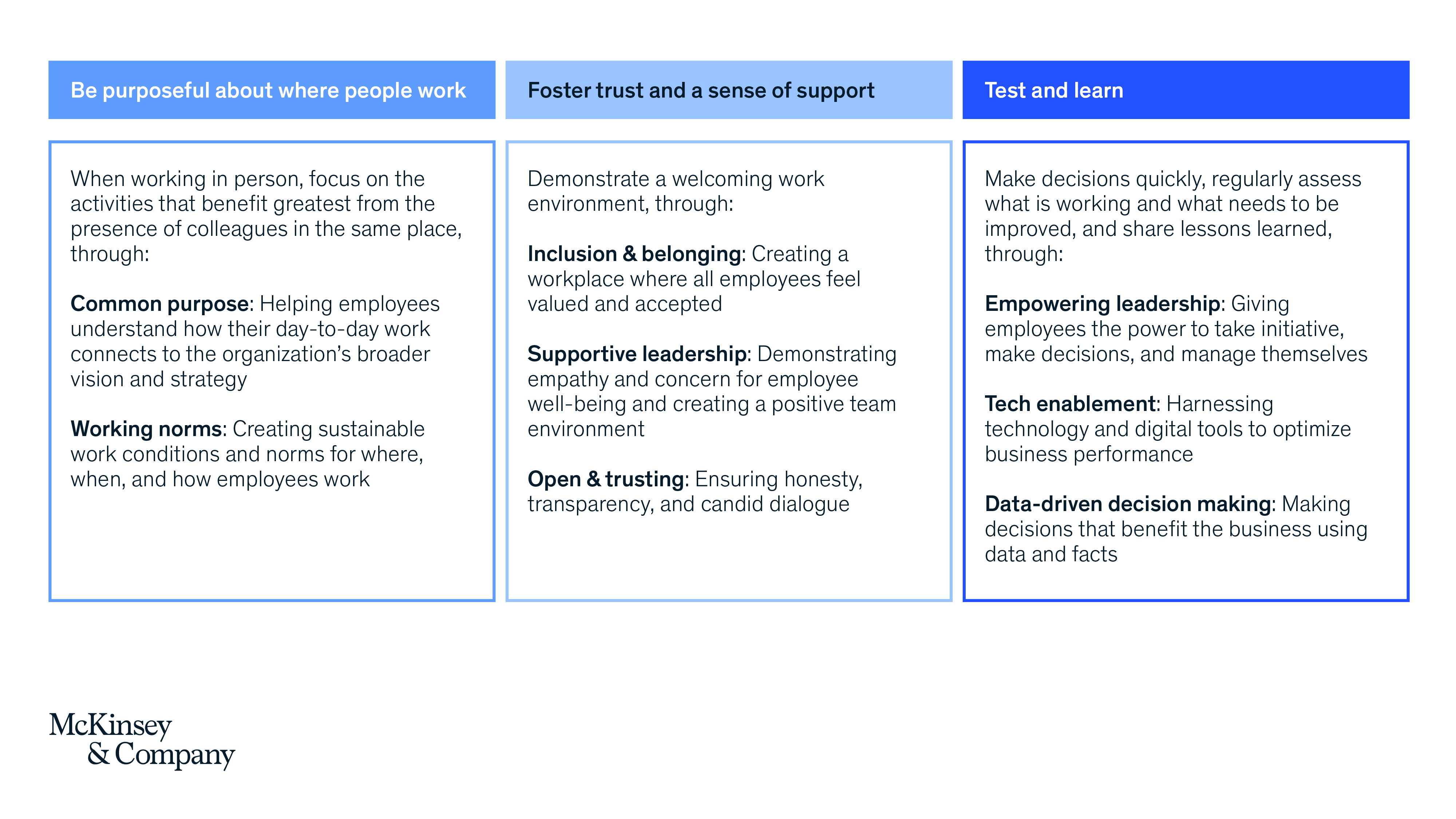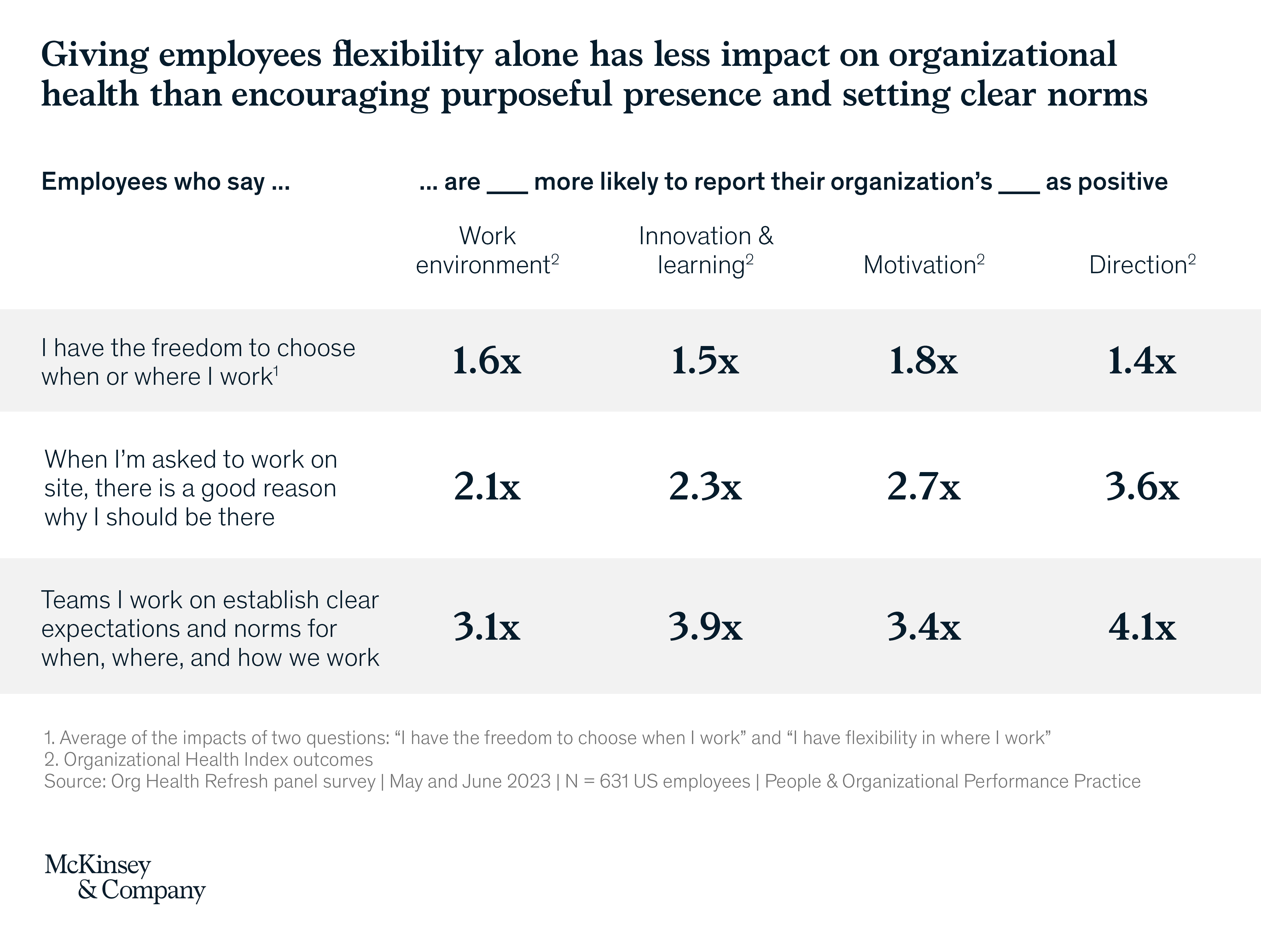Our work in organizational health suggests that a fully remote organization can demonstrate a level of health that rivals, if not exceeds, the performance of most traditional companies. Organizations encouraging moderate on-site presence can learn about overcoming the inherent challenges of hybrid work from the experiences and operating models of highly distributed and remote-first companies.
To better understand and assess the impact of these operating models on organizations today, McKinsey is re-examining and refreshing an important resource: the Organizational Health Index (OHI). Based on more than two decades of expertise, our approach to measuring and improving organizational health has helped more than 2,600 clients in 100-plus countries improve and sustain performance. Although we have researched and published extensively on hybrid and remote work, we had not yet directly leveraged the OHI to connect flexible work practices (i.e., when, where, and how work gets done) to organizational health.
Since much of the debate continues in the hybrid middle—where most organizations are operating and where individual employee experiences can vary wildly—we’ve partnered with technology organizations that have been fully remote since before the COVID pandemic to help quantify the impact of their operating models. All the companies we have studied achieved top-quartile scores on the OHI, and the largest and most mature of these organizations achieved top-decile health as compared to our benchmarks. This demonstrates that it is possible to reach an exceptional level of organizational health through clear values, transparent decision making, and intentional ways of working designed to overcome limits and coordination challenges across time and place.
There are also similarities in these organizations’ cultural profiles, notably top-decile scores on OHI outcomes for Work Environment and Motivation. They share common leadership styles with top-decile performance on Consultative Leadership and Supportive Leadership OHI practices as well.

We have learned from these studies that there are six priorities for companies that aspire to sustain a flexible or highly distributed workplace alongside top organizational health, each with a set of actionable practices:
- Remove ambiguity about working practices. Set expectations, emphasize clear and consistent meeting protocols, and incorporate asynchronous work practices—enabling collaboration without real-time communication—through role clarity and operational discipline.
- Reset performance expectations. Create an environment where on-site and offsite colleagues feel on equal footing, through performance goals and reviews.
- Be transparent. Have a single source of truth for all managers and employees (e.g., a regularly updated handbook that lays out the rules and norms), through knowledge sharing and process-based capabilities.
- Be purposeful about where people work. Hybrid organizations should encourage informed, intentional choices to work together in person—focusing on the moments that matter—by helping employees understand working norms and why they are asked to be onsite. A similar level of strategic intentionality should be applied to remote working decisions as well.
- Foster trust and a sense of support. Demonstrate a welcoming work environment, through inclusion and belonging, supportive leadership, and openness and trust.
- Test and learn. Make decisions quickly, regularly assess what is working and what needs to be improved, and share lessons learned—even the failures—through empowering leadership, tech enablement, and data-driven decision making.


These six priorities are deeply ingrained within the culture at the fully remote companies that we’ve assessed, helping their employees connect and collaborate across locations and time zones while enabling top quartile performance. Organizations that have adopted, or are considering, a hybrid or fully remote operating model should follow suit—our work suggests that doing so could prove an accelerator for their organizational health.

We look forward to continuing to test the boundaries of how organizational health is impacted by workplace flexibility, experience, and the relationship to resilience of today’s organizations. To learn more about the OHI refresh, read our article, “Organizational health is (still) the key to long-term performance.”


